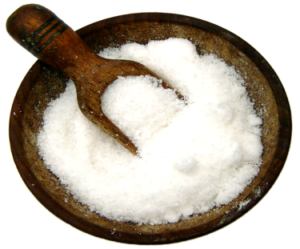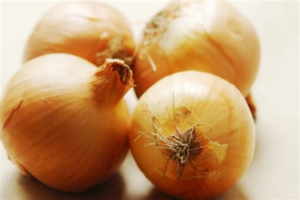The ultimate fuel for your garden: Blood meal:
Seasoned gardeners should be familiar with the term “blood meal,” but if you’re a beginner and have just started gardening, you might get a creepy and scary feel listening to this term. What is a blood meal?
What’s with the name? What is it used for? How is it related to gardening? If you have landed on this piece of writing, there is a likeliness that all of these questions are wandering in your mind.
Well, you don’t have to bother yourself worrying about it, as all the possible information regarding blood meal has been jotted down in this article. Give a good read to understand what exactly blood meal is and the array of applications it has for gardening.
The name pretty much justifies the properties of this product. It is a kind of fertilizer that uses dried blood in it. Using blood in compost would sound odd to many people, but experienced gardeners are aware of the fact that blood has a considerable amount of nitrogen, which is the same element that boosts growth and nutrient availability to the plant.
Blood meal can be an incredibly nurturing, healthy, and organic alternative to nitrogen fertilizers, and its budget-friendliness will surely captivate those intent on using it. Blood meal offers to provide the highest amounts of nitrogen to the plants, and trace elements are also present in small quantities.
So let’s hop on the questions to get detailed information about blood meal, it’s properties, and its uses in the gardening field.
What is a blood meal in the first place?
Blood meal, quite simply, is an advanced or upgraded form of fertilizer, providing a slow-paced release of nitrogen when incorporated into the soil. A blood meal is the ultimate source of nitrogen to your plants, as animal blood is substantially rich in proteins and nitrogen is part and parcel of protein.
Prepared by the dried and powdered blood of slaughtered animals (more specifically cows), is an incredible source of fixing nitrogen into the soil. It is beneficial for plants that require lofty amounts of nitrogen for their propagation like cucumbers, cabbage, squash, and tomatoes.
Blood meals can also be used as liquid fertilizer because of its water-soluble nature. Blood meal can either be mixed with the regular gardening soil or can be used as an isolated nitrogen supplement.
It fixes the depleting levels of nitrogen in the soil, giving a surplus quantity of nitrogen within no time. One of its most significant advantages is its organic nature, so if you don’t want your crops or plants to get exposed to the harsh synthetic chemicals, this is an ideal pick for your garden/ field.
But how is the perfect recipe for blood meal prepared and what are the initiatives taken to incorporate blood meal into the soil for the sake of fertilizing? Scroll down to learn the basics of how to use a blood meal for your plants.
What you should know before using a blood meal?
Just as you wouldn’t over water plants to avoid water logging and the rotting of the roots, in the same way, supplying the plants with excessive nitrogen can lead to diseases and weakening of stems. So, first and foremost, you have to make sure if your soil needs nitrogen or not. Using it is a whole science in itself, as you have to take various steps to ensure proper usage and to make the most out of your blood meal. Here is the step by step guide on how to use blood meal.
First of all, check your soil for the availability of different nutrients. Soil tests- if done correctly- indicates the precise amount of nutrients in the soil. The soil test can quickly determine the availability, deficiency, or percentage of nitrogen.
Further confirmation of nitrogen deficiency can be affirmed by the plant condition. When your leaves have yellow discoloration or appear to be wilted, your plant is in a nitrogen deficit.
Once you have confirmed the nitrogen deficiency in the soil, it’s time to shop for the best blood meal brand in town. USDA approved blood meal is a standard option and is readily available at the gardening accessory stores or local markets.
After you have gotten your hands on the best blood meal, you’re all set to drizzle your blood meal on the plants. The preferable season for it’s incorporation is spring. Since spring is the season when plants tend to be in full swing, give your blood meal a shot in print and see them grow robustly.
Calculate the quantity according to the area of your interest where you want the plants to get the desired nitrogen. For a small potted plant, 2 to 3 spoons of blood meal would do okay, but for a bigger garden or field, you will need several cups according to the size.
You can not sprinkle your blood meal directly on the soil unless you intend to kill the pests. In this case, you can spread a little amount directly, but on the contrary, if you want to elevate the nitrogen levels, you will have to mix it with soil or water for making it usable as a fertilizer.
Extra tip: Don’t overuse it, or you will end up burning your plants.
Mixing blood meal with water like a pro:
While you opt for your favorite and desirable blood meal, you should go through the labeling on the package to understand the “How-To” of your blood meal. Because it comes in many forms, and the usage varies according to the type, blood meal can be in the form of granules, powder, or powder to be formulated with water.
Mixing blood meal with water is no rocket science, the reconstitution usually comes labeled on the package. But if you don’t find the instructions on the package, you can always go for one tablespoon per gallon. After the formulation, the prepared mixture can be sprayed on the soil wherever it is required.
Bonus tip: Use a blood meal mixture every two months to boost your plant growth.
Do you want to use a blood meal for tomatoes?
Blood meal as a fertilizer for tomato plants would be a great option. Tomatoes require an abundant supply of all the nutrients, especially nitrogen, phosphorus, and potassium. For optimum fruit yield, try to prepare and fertilize the soil before planting.
Once you have decided where to grow your tomato plants and what kind of blood meal you’re going to use for it, take the ratios of about 3 pounds per 100-foot area of the field and spray or sprinkle it on your soil and wait about 5 to 6 weeks for it to mix properly and reach deep into the soil. Now you can start planting your tomatoes and see them thrive in full bloom.
How about blood meal for roses?
Roses are typically found growing throughout the year, and when provided with the right quantities of nutrients, it can bring about the most vibrant and colorful blooms.
Rose plants produce healthy leaves and flowers in excess of nitrogen due to the downpour of essential enzymes within the plant. In this regard, exposure is hugely beneficial. Blood meal improves the soil quality and floods the soil with nitrogen as it contains high amounts of nitrogen (12-0-0).
Formulate your blood meal in water, approximately 5 -6 pounds of it should be taken for the whole garden of rose plants. Once you have scattered it over the soil, scour the soil so the fertilizer can go deep down and reach the roots of the plants. Don’t forget to water your plants again after the application, as doing this will ensure the proper release of nutrients.
Enough with the details, right? Well, you would probably have made your mind until now about using a blood meal for your garden or field. In that case, your next question would be. ⬇
Where to buy blood meal from?
The fact that blood meal is getting very popular among gardeners is pretty apparent. So all the big stores stock up on blood meals from different brands. You can get a variety of brands to choose from. However, they can cause you quite a few more bucks than the local nurseries and feed stores. So we would suggest getting it from any nearby nursery or animal/plant feed store.
The reason for buying from the local nursery is two folds. First of all, you will be saving a handful of your money as compared to the store or supermarket brought one. And secondly, the quality of this blood meal will be a lot better than the other one.
Thanks to the growing online shopping trend, you are open to a plethora of options these days — I.E., online purchasing. Many websites and marketers are also providing online blood meal buying options, which are very convenient and practical. But again, making sure that the quality is up to the mark should be the first and foremost priority.





